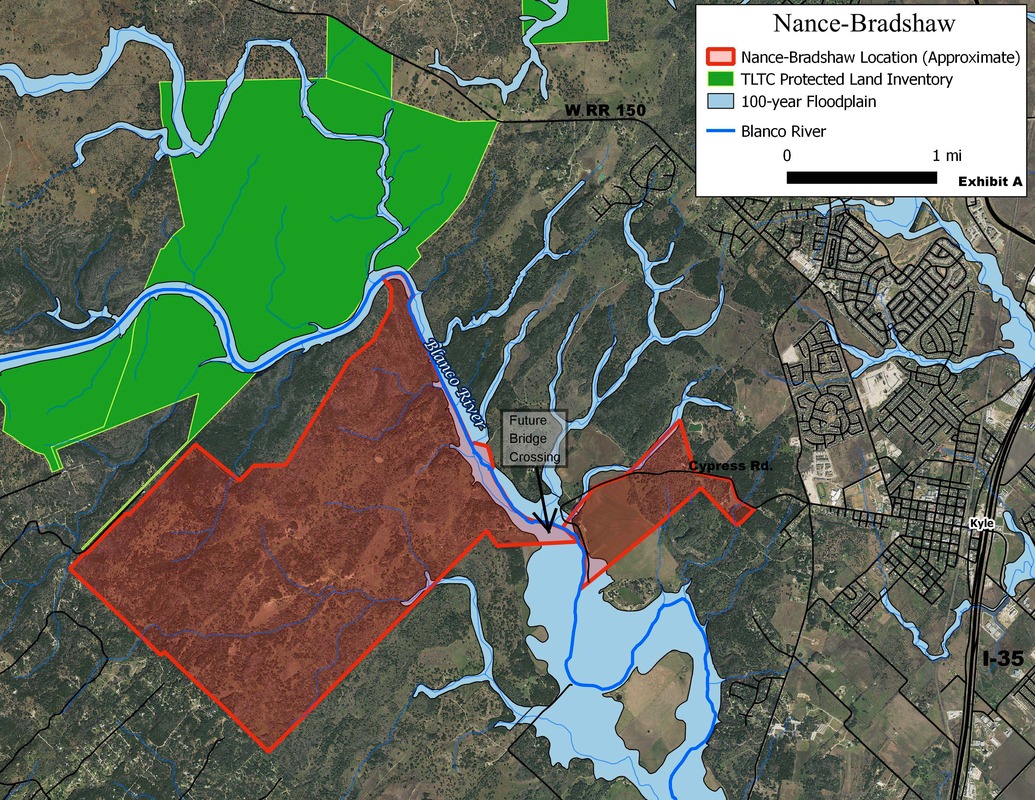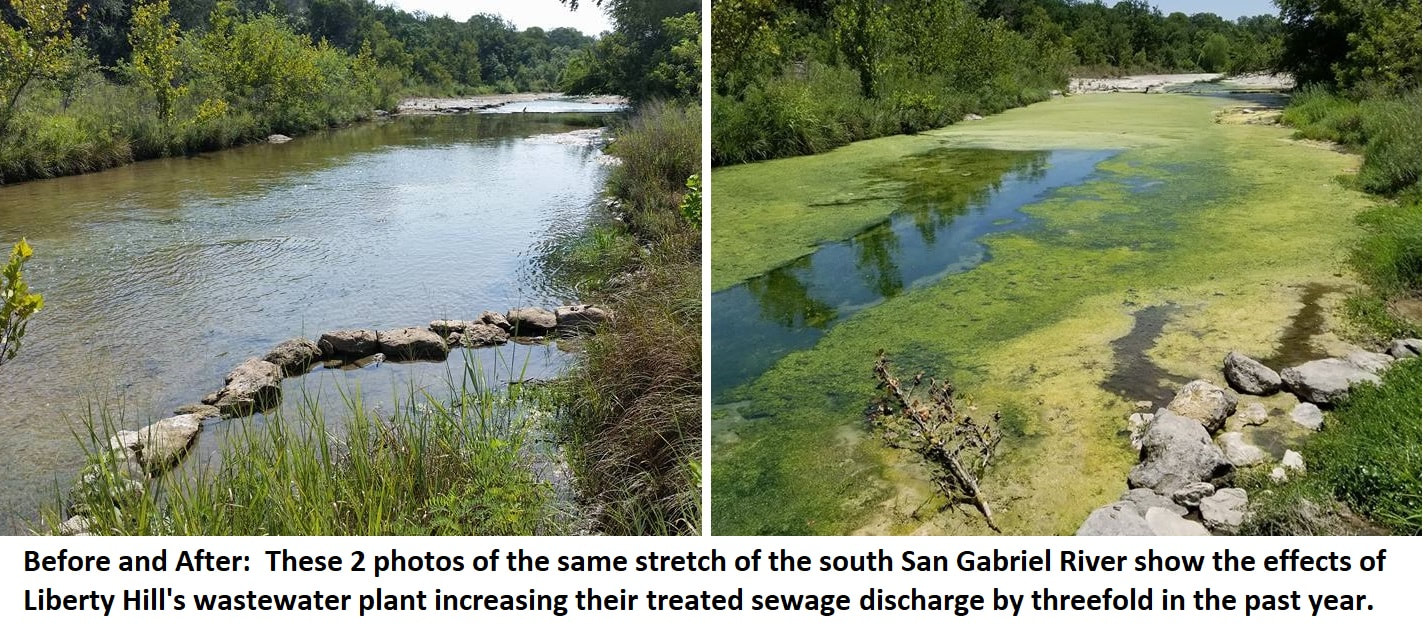 Kyle Residents, SOS File Suit Over Sweetheart Development Agreement Lawsuit Claims Kyle City Council Violated Texas Open Meetings Act & Texas Constitution On Tuesday, September 15, 2020, three Kyle residents and the Save Our Springs Alliance filed suit against the City of Kyle to prevent the implementation of a development agreement that locks in exorbitant development entitlements for a massive, 3200+ acre development located on the banks of the Blanco River and over the Edwards Aquifer. The lawsuit has two main claims: (i) that the Kyle City Council’s approvals of the Nance-Bradshaw Ranch development agreement and related actions violated the Texas Open Meetings Act by failing to provide prior public notice of the agreement’s provisions; and (ii) that the development agreement contracted away to private developers the City of Kyle’s police powers to manage growth, in violation of the Texas Constitution. After months of backroom dealing, on May 3, 2016, Kyle city staff presented the Kyle City Council with a development agreement to govern the annexation and development of the Nance-Bradshaw Ranch, a 3,268.6 area of land, located mostly along the west bank of the Blanco River. The 101-page draft development agreement was distributed to the City Council only minutes before the May 3rd meeting began. No backup information was included with the agenda item, and the public was never provided a copy of the draft agreement prior to the vote. As the lawsuit points out, the posting language lacked the basic components for public notice required by the Texas Open Meetings Act, including the location of the property and the subject matter of the agreement. Despite not having time to read the development agreement, the Kyle City Council voted 4-2 to approve it. “The two council members that voted ‘no’ explained from the dais that they weren’t even given a copy of the agreement until minutes before the meeting started,” explained Lila Knight, a Kyle resident and lead plaintiff listed on the lawsuit. “Not only did the public not have an opportunity to review the agreement, but the council members themselves had no idea what they were voting on. They didn’t have time to read it.” Even though the property is zoned for “agricultural uses,” the development agreement guarantees the owners the absolute right to develop the property with up to 9,000 “living unit equivalents”.[1] The agreement remains in effect for up to 45 years and locks in the owners’ rights to develop the property however they see fit, binding future city councils from making any zoning decision that would affect the development of the property without the owners’ consent “This is a plain case of unconstitutional contract zoning,” explained Bill Bunch, Executive Director of the Save Our Springs Alliance. “The Texas Constitution guarantees that voters have the right to elect representatives to manage the City’s growth through zoning, budgeting, and overall city planning; the Kyle City Council cannot contract away that legislative authority.” Prior to approving the challenged agreement, Kyle’s city limits were located entirely on the northeast side of the Blanco River. This development agreement expands the city westward across the Blanco River, incorporating approximately 3,000 acres of the Nance Bradshaw Ranch along the river’s southwest bank and over the Edwards Aquifer recharge zone. The development agreement commits the City to seek local, state and federal funding to build a new bridge to provide access and develop these environmentally sensitive lands with well-over 6,000 new homes and associated commercial development. The bridge would extend Cypress Road, which turns into Center Street and provides the most direct route from the 3,268 acres to I-35, through downtown Kyle. No traffic impact analysis was prepared for the development agreement. “This was a backroom deal, hidden from the public, with no real thought for what it means for the environment, city finances, or city traffic,” said Ms. Knight. “This agreement, with its thousands of acres of ‘build whatever you want’ development and the bridge over the Blanco River abandons decades of planning that focuses growth for Hays County and the City of Kyle along the I-35 corridor. It would literally pave the way for unmanaged sprawl in one of the most environmentally sensitive and currently rural areas in our region.” The lawsuit also seeks to enjoin the City from spending millions of dollars of taxpayer and ratepayer funds to expand roadway and utility infrastructure to support the development. The City of Kyle has projected that the new development would add up to 25,000 new residents to the City, a 50% increase over its estimated population, requiring significant, future financial investments by the City and its taxpayers and utility ratepayers. [1] A “living unit equivalent” is a unit of measurement tied to the typical amount of water used by a single-family residence located in a standard subdivision; for example, a single-family lot would be equivalent to one LUE, while a condominium unit might only represent one-half LUE. Please Send a tax-deductible donation to SOS Alliance today so that we can continue legal advocacy work to protect the Edwards Aquifer and to promote open, honest government and participatory democracy. Share this email with friends and colleagues and ask them to stay informed by subscribing to our email newsletter here .  Excrement happens. We all poop and pee. For most of us, our body wastes wind their way to a treatment plant, where biological, chemical, and physical processes remove some of the waste, convert some of it to less harmful forms, and then discharge what’s left to a nearby creek or river. For other communities, the treated wastewater is kept out of our streams, irrigated on fields or other landscaped areas and/or reused in other ways. The discharge of municipal sewage to our nation’s waters persists despite a bipartisan Congress voting overwhelmingly in 1972 for a national goal to “eliminate discharges” of pollutants to our nation’s waters by 1985. That goal remains a cornerstone of the federal Clean Water Act to this day. A case in point: yesterday Liberty Hill, Texas, a small town in far western Williamson County, was in the news again for its fouling of the South San Gabriel River. The photos and drone footage show exactly what happens when treated sewage is discharged into to our crystal-clear Hill Country waters. As a last resort, our friends at Texas RioGrande Legal Aid and downstream neighbors filed an official notice of their intent to sue Liberty Hill for thousands of violations of the Clean Water Act. SOS Alliance has assisted this effort, and we will help some more if needed. Meanwhile, in Blanco, last week the City Council responded to hundreds of requests from citizens and conservation groups to create a task force to advise the City on its wastewater future. The goal of the task force is to find a path forward that keeps all of the City’s wastewater out of the Blanco River and put to beneficial reuse. THANK YOU!! to everyone who sent an email or phoned Blanco’s mayor and council urging them to pursue the task force and eliminate its river discharge. At the same time, the Blanco council refused to put on hold its application to the TCEQ for a permit to discharge over a million gallons per day of sewage into the Blanco River. Continuing to spend money to pollute its namesake river makes little sense; it suggests a majority of the council believes the task force will not help the City “eliminate discharge” to the river as Congress implored almost 50 years ago. How is it that today, in 2020, so many local officials make every kind of excuse and explanation for why their (our) sewage is not really causing the problem, or its only a small part of the problem, or that “it costs too much to fix it”? Downstream neighbors, native fish, people who enjoy swimming and fishing don’t add up to much in this equation. Too often, voters – poopers – let them off the hook. Every day, usually a few times a day, behind closed doors, we contribute our share to the problem. We flush and forget. We pay our bills, cast our votes, and keep on pooping, without demanding that our elected officials take action to keep our own waste out of our nation’s rivers and streams. It’s time for Texas, at least central Texas, and for each of us to take action now to restore our rivers and eliminate our discharges to the waters of the United States. |
Archives
July 2024
Categories |
Save Our Springs Alliance |
Quick Links |
SOS is a 501 c3 non profit and your donation is tax deductible

 RSS Feed
RSS Feed
